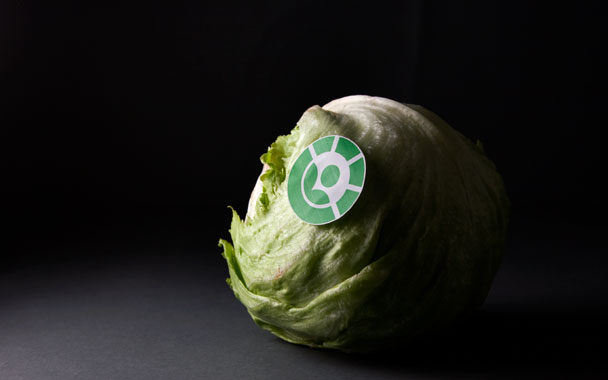Junk Food in, Junk Food Out
American feedlot operators are nothing if not inventive. Faced with soaring corn prices, large-scale beef producers have fortified cattle fodder with cheaper high-energy alternatives like potato chips, M&Ms, and waste products from Mars and Hershey’s, and other confectioners, according to a video released earlier this month by The Wall Street Journal.
If that sounds appalling, consider this: Corn is no more natural to a cow’s diet than chips or candy. Their guts are admirably suited to digesting grass. Anything else tends to make them sick, so feedlot cattle receive massive doses of antibiotics along with their corn, and, now, snack foods.
And cows aren’t alone among agribusiness animals dining on junk food. For some time now, hog farmers have been giving their charges cake, frosted breakfast cereals, and Tater Tots, among other foods of questionable nutritive value.
I’m fine with the occasional M&M. I’d just rather it not be processed by a cow’s digestive system before it reaches mine.
A Glowing Decision
It’s been coming for a long time. Last week, the Food and Drug Administration (FDA) granted approval for the use of irradiation to kill bacteria on fresh lettuce and spinach in response to several outbreaks of potentially fatal E. coli over the past couple of decades.
Irradiated greens will be required to display the RADURA logo, an international symbol for food that has been zapped. Packages will also have to bear wording saying that the contents have been treated with radiation. Suresh Pallai, an electron-beam advocate at Texas A&M University, said the agency’s move will “change the landscape of food safety in the nation forever.”
Not so. The decision, supposedly made in the interest of food safety, is largely meaningless. The FDA okayed irradiation for meat and poultry in 1997, and the reason you don’t see any of those catchy green RADURAs at the meat counter is that consumers—perhaps knowing something the FDA doesn’t—won’t touch the stuff, so meat packers have been reluctant to zap. But that hasn’t stopped some high-level federal legislators from throwing their support behind the process.
Perhaps the FDA is hoping this headline-grabbing announcement will deflect attention from its dismal efforts to enforce the sanitation rules already in place. As the House Oversight and Government Reform Committee reported earlier this year, even though the FDA is supposed to inspect vegetable packing plants annually, it only gets around to it every two and a half years. Since 2001, FDA inspections uncovered everything from rodent waste to filthy restrooms and poor worker hygiene. And what did the agency do to offenders? Nothing.




 Pinterest
Pinterest


